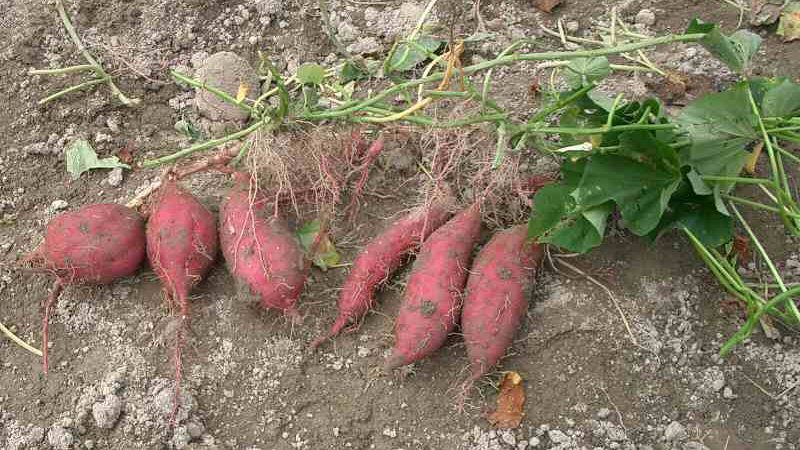
SYNOPSIS:
I started this series (14 articles so far) quite some time ago to help my vegan and vegetarian (I’m not!) friends and omnivores as well because of the obvious health benefits.
Since then, I’ve learned and discovered a lot more information that could not ignored.
Therefore I plan to amend and expand all 14 former articles before I can continue introducing a lot more vegetables!
Incidentally、 nothing, pictures included, is copyrighted in my food blogs, so please feel free to use anything!
1) POTATOES, 2) TOMATOES, 3) BROCCOLI, 4) CARROTS
Sweet Potatoes or “Satsuma Imo” were first introduced to Japan in the Ryukyu Islands (Okinawa) in 1604 by the Chinese. It was then introduced in Kyushu in 1609, an area that grows 80% of the total Japanese production.
As rightly pointed out by Cometilblog, sweet potatoes should not be confused with yams or yama imo/山芋 in Japanese.
Sorry for making this basic mistake myself in soite of 33 years in this country!
It has been recognized in this country fro a long time for both its nutritional and pharmaceutical qualities.
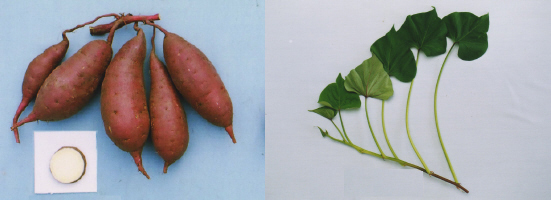
There are over a hundred species in Japan, but the most popular edible ones (not the ones exclusively used for making shochu) have red skins and light yellow flesh.
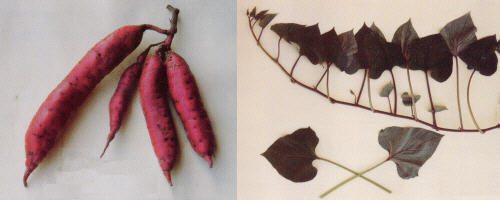
Beni Azuma, mostly eaten in Eastern Japan. Turns very sweet upon cooking.

Naruto Kintoki, popular in Western Japan. Considered elegant and sweet.

Tosabeni, also attributed “No 14 value (top)”, is very sweet and is a “brand name” yam.
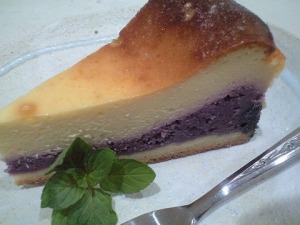
Cheese cake combination with Tosabeni Yam!
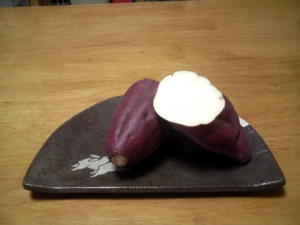
Manamusume, another “No 14 value” brand yam.

Gorou Shima Kintoki, particularly popular as baked yam.

Kogane Sengan, considered as the top shochu yam.

Tanegashima Mukashi Mitsu, a sweet yam with a beautiful orange colour and elegant taste.

Tanegashima Murasaki Imo, as above, but with a beautiful purple colour.

Annou Imo, rich in carotens, with a beautiful orange colour and very sweet.

Annou Imo cuisine!

Purple Sweet Road, an interesting name for a sweet tasty hybrid.

The same as above as hyokan Japanese jelly!
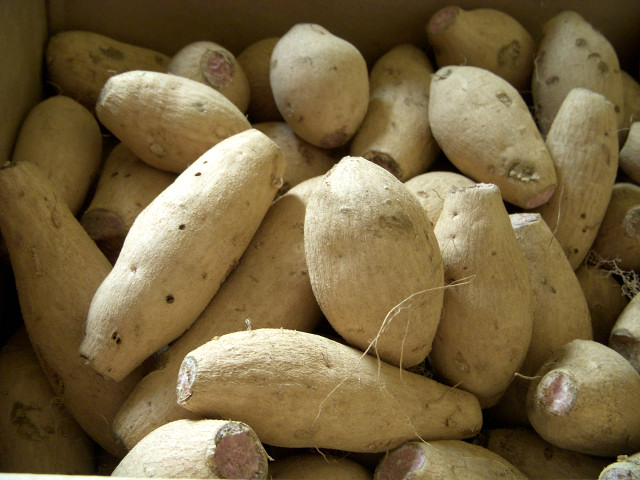
My personal favorite is the “Tanegashima Gold Imo” grown in Taneko Island south of Kyushu. It has the particularity of being red when raw before chaning to a rich golden color when cooked. Among other varieties, the violet yams are getting increasingly popular.
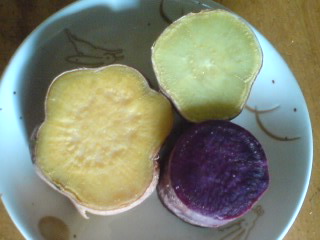
Tanekoshima yam (deep yellow), “common yam” (light yellow) and Murasaki/Violet yam.
The Missus particularly likes to mix the three above as a cold salad with mayonnaise or cream-based dressing.
FACTS:
-Season: September to November
-Main elements: Carbohydrates, Carotene, Vitamin B, C, E. Potassium, Calcium, Magnesium, vegetal fibers.
-Beneficial to digestion. Good for the skin!
-Lose very little of its beneficial elements even after a long cooking.
TIPS:
-Choose specimens with nice color and a “fat/roundish” aspect!
-Plunge yam in cold water as soon as you have cut them. They will not lose their color!
-Boil, bake or steam long enough before taking skin off. Discard skin!
-Leaves can be eaten!
HEALTH FACTS:
-Combined with burdock root, or shiitake, or carrot, or spinach, helps combat colds, helps enhance skin health, helps combat llung and intestine cancer.
-Combined with devil’s tongue tuber, or hijiki sweet seaweeed, or beansprouts, or apple, helps combat cancer, constipation, obesity, and artery hardening.
-Combined with Judas ear mushroom, or shiitake, or seaweed, or hijiki sweet seaweed, helps lower blood cholesterol, helps combat obesity and diabetes.
-Combined with strawberries, or lemon, or pimentoes, helps combat stress, helps skin rejuvenation and intensifies appetite.
RECOMMENDED RELATED SITES
Not-Just-Recipes, Bengal cuisine, Cooking Vegetarian, Frank Fariello, Gluten-free Vegan Family, Meatless MamaFrank Fariello, , Warren Bobrow, Wheeling Gourmet, Le Petit Cuisinier, Vegan Epicurean, Miss V’s Vegan Cookbook
Please check the new postings at:
sake, shochu and sushi
—————————————-
日本語のブログ
—————————————-
No comments:
Post a Comment